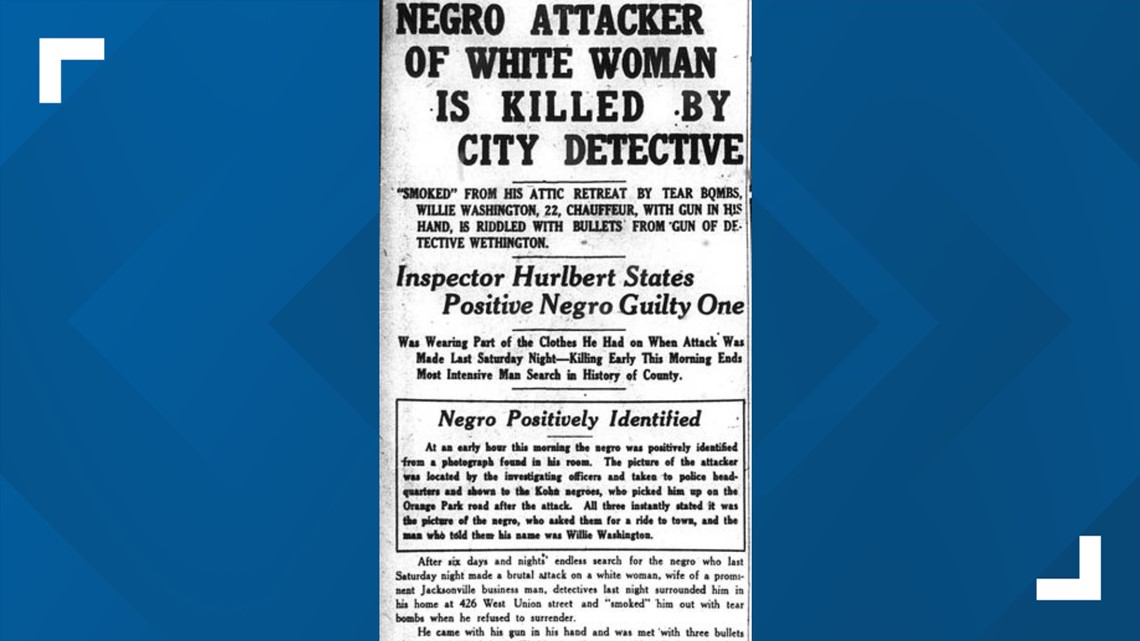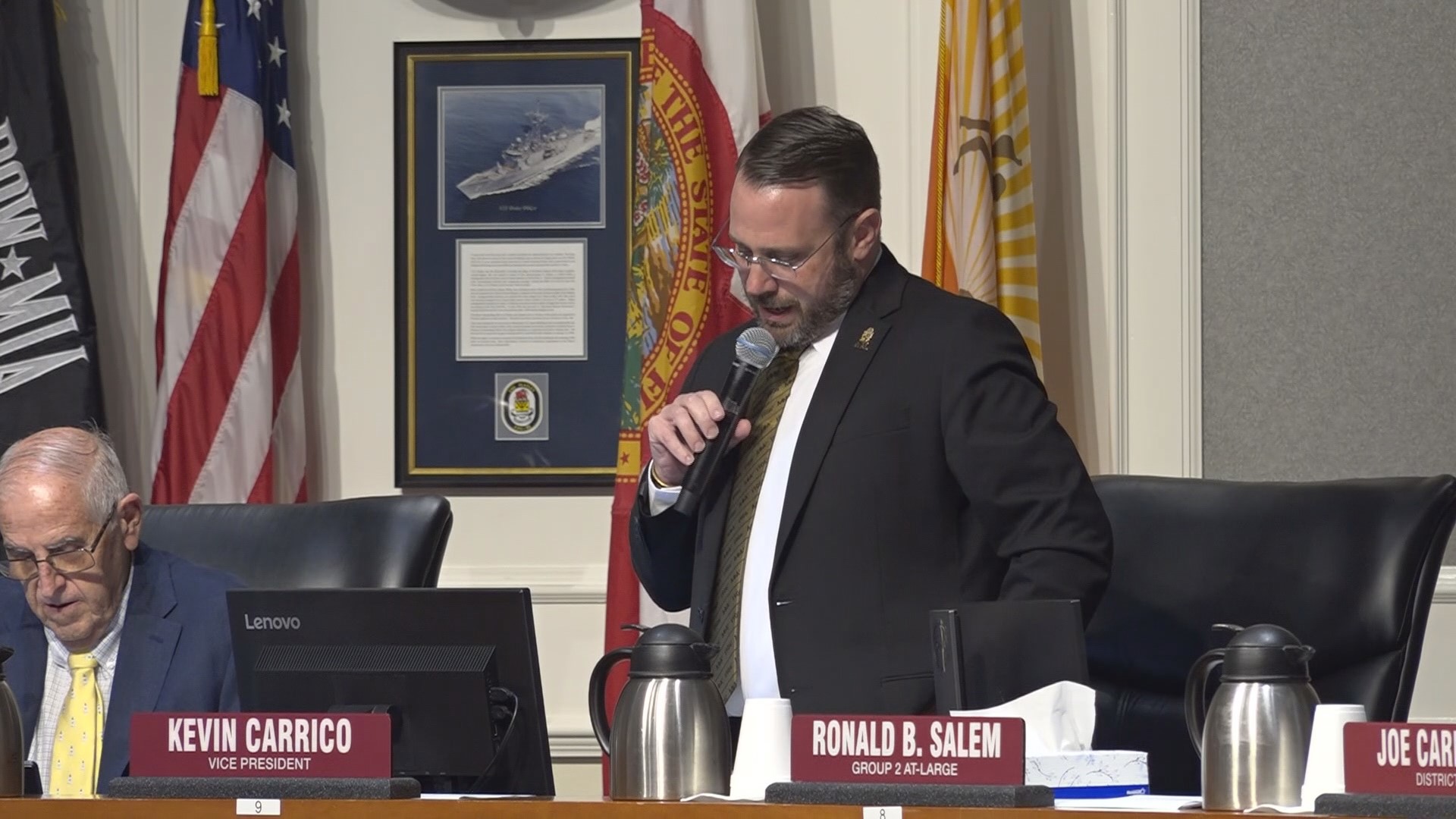JACKSONVILLE, Fla. — Almost a century after he was killed by police, this weekend people in Jacksonville will commemorate a Black man whose corpse was put on display for curiosity seekers as being the victim of a racial terror lynching.
Willie Washington, a 22-year-old chauffeur, was shot inside his family’s downtown home on Jan. 31, 1925 after a weeklong manhunt for a nameless Black man who had attacked a white society woman.
What happened after the shooting made his death a lynching.
“The body of the negro was placed on exhibit yesterday at 11 o’clock following a conference of local officials,” the Times-Union reported at the time.
“It remained on view in the rotunda of the county jail until 5 o’clock yesterday afternoon. During the day hundreds of persons streamed through the rotunda viewing the remains of the brown criminal who stirred Jacksonville to a pitch of excitement not experienced in decades.”


Ninety-six years later, Washington’s death will be remembered by participants in the Jacksonville Community Remembrance Project, an initiative to use the history of lynching locally to open dialogue on race and come to terms with the legacy of racial violence.
“Wherever there are people who are willing to have conversation around race, we will be there,” said Kimberly Allen, CEO of 904WARD, the nonprofit that organized the volunteer-run remembrance project.
Project organizers have scheduled a soil-collection ceremony, where ground around the spot a lynching victim died is collected into jars marked with his name. One is sent to a national memorial in Alabama and another is kept locally.
The ceremony, scheduled for Sunday at 3 p.m., is part spiritual, part historical and informational, said Lynn Sherman, co-chair of the remembrance project.
It will be held online to avoid exposing people to health threats from COVID-19, and organizers plan “caring circle” discussions after the event for people to share their thoughts. 904WARD has been registering participants through its Facebook page.


Washington's lynching just one of many
Organizers have identified eight deaths in Duval County as lynchings, part of a wave of racial violence that reached 20 states between the 1870s and 1950.
Washington’s death wasn’t on that list when remembrance project volunteers began meeting about three years ago and researching local killings. They had received a series of references to lynching collected by the Equal Justice Initiative, the organization behind the National Memorial for Peace and Justice in Montgomery, Ala., including a 1925 story in a Black newspaper in New York about racial violence in Jacksonville.
Reading back through Jacksonville newspapers from the weeks before that story appeared, Florida State College at Jacksonville history professor Scott Matthews said he found something altogether unexpected.
The Times-Union and other papers around Florida reported that January about Black men assaulting white women in Jacksonville and whites – police, sheriff’s deputies and members of the public –searching everywhere to find the ones responsible.
When police reached Washington’s family home at 426 W. Union St. and lobbed tear gas into the attic to make him come out, it ended the “most intensive man search in [the] history of county,” a Times-Union headline said.
Although Washington was shot dead, white vigilantes wanted more, and talked about taking his body to burn, said newspaper accounts that described police guarding the morgue to keep crowds away.
Mayor John T. Alsop, three judges, Sheriff W.H. Dowling, the city’s police chef and local leaders talked together, the Times-Union reported, before agreeing to move the body to the jail so people could see for themselves that he was dead.
“This was something more than the police finding their man and shooting him,” said Scott Matthews, a Florida State College at Jacksonville history professor who researched Washington’s death for the remembrance project. “The broader white community of Jacksonville needed assurance.”
But that assurance, which the newspaper called “an object lesson,” was also a kind of terror inflicted on Washington’s family and on Blacks as a whole, Sherman said.
She said Sheriff Mike Williams assigned two Sheriff’s Office administrators to represent the agency at the ceremony and that others have expressed interest in taking part. A number of city officials have been invited, Sherman said, but it’s not clear whether any plan to attend.
Washington will be the fifth person commemorated by a soil-collection ceremony in Jacksonville. Organizers have made plans to install historical markers at the lynching sites later.



